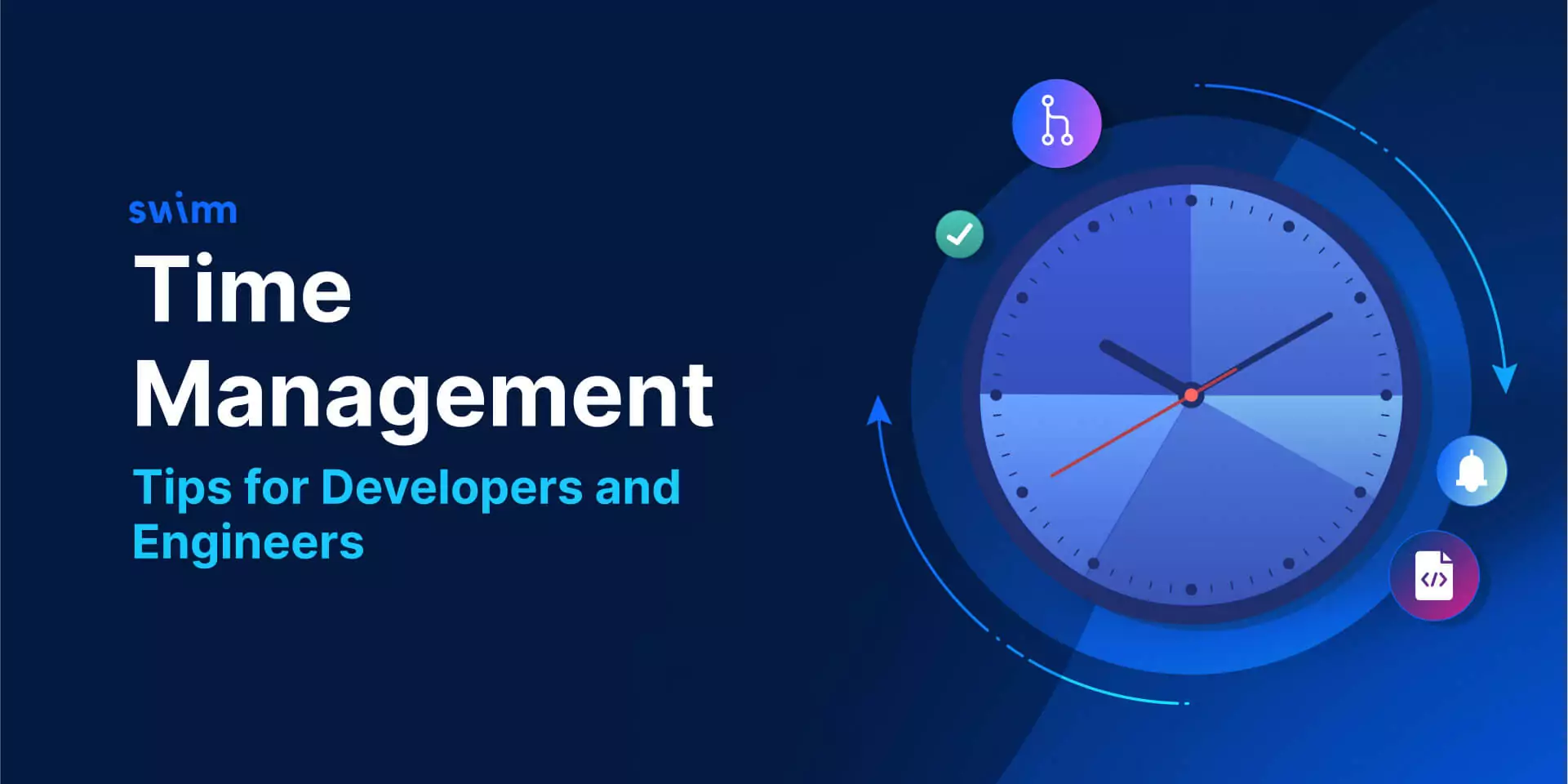Bug fixes, new features, client requests, sprints, and deadlines – never enough hours in the day for busy R&D teams.
But as developers and engineering teams face more and more hard deadlines, we ultimately are in charge of managing our workdays best. As a fast-growing startup, we tried to adapt by adopting some critical rules of thumb and everyday practices like time-blocking (easier said than done, we know), always staying on top of the best devtools for the team, and choosing accountability partners.
To that end, the Swimm engineering team is happy to be sharing some of the time management strategies we’re working with on the ground here at Swimm.
Swimm’s top 6 time management tips
Diving right into our top time management tips.
Time management tip #1: track your time
Before you can set goals for improved time management, you have to take a hard look at where you’re wasting time in the first place. If meetings are one of the biggest time-sucks each day, there might not be much you can do about it, and you’ll simply need to work the rest of your day around it.
But there are plenty of things you can control. For a fixed amount of time, jot down how you spend your time throughout the day to understand where there are pockets of time to claim and organize.
Time management tip #2: use time blocking
Working in time blocking – tackling your work in chunks of time either by doing a combination of similar tasks or working on one longer project – helps steer you away from task switching, which zaps productivity for most people.
Interruptions are also a productivity killer. By laser focusing for a set period of time, you can better plow through your tasks while still having plenty of time for meetings and interacting with coworkers. Also, shift tasks to a time of day when you’re most productive at them. So if you find you do your best debugging in the afternoon, set up your schedule as best as possible to create time blocks in the afternoon. And if in doubt, go off-grid as much as you can.
At Swimm, we have a t-shirt system to label smaller development tasks and bugs; user fixes are always a top priority in our sprints.
Time management tip #3: use your top dev tools or switch them out
Whatever dev tools you and your team are using should be the best options. And when they stop being the best match, start the conversation with the rest of your team to see about switching them out.
We’ve got our top list of dev tools at Swimm, but we imagine that this list will change as more dev tools become available, and Swimm’s platform grows.
Time management tip #4: choose accountability partners on your team
Working in squads, the spirit of this type of collaboration is an advantage for R&D teams. Because as organized as we want to be, we’re better at staying on track working on teams. And your team can be a great resource when you’re stuck. You cannot put a price tag on talking out with someone on your team. You most always walk away with another direction, idea, etc.
Time management tip #5: account for the unexpected critical task
One bad habit that impacts everyone, but can significantly impact developers and engineers, is prioritizing critical tasks (resolving a bug or responding to status update requests) over “regular” important ones (writing code). Just a few urgent tasks each day, and you’ve lost a few hours.
As you’re putting out those fires, consider a concept called “free float,” which refers to the timeframe you can put off a task without it pushing other tasks back. The best practice is to block off an extra half hour or more throughout the day for urgent items so that those unexpected emergencies don’t mess up the rest of your day.
Time management tip #6: done is better than perfect
Perfect is not usually or often the goal for developers and engineers. Good is usually enough, even if you’re theoretically, of course, always shooting for excellent.
Knowing when you’re good enough and need to move on to your next task is ultimately the key here. Because if something is never done because it’s not perfect, you will get caught in a cycle of perfection beating completion. And that’s usually a losing battle.
Bottom line
With better time management tools and techniques, you can confidently tackle your list each day. It’s not uncommon for teams to be inspired by others’ increased productivity; developing positive time management habits is always a win-win for individuals and teams.
On the saving time front, our recent case study with Riskfuel shows that Riskfuel spends 55% less time onboarding new employees with Swimm’s platform. So it’s a game-winning time-saving move in our book.
To learn more about how developers and engineering teams across the globe are seeing a boost in developer productivity with code-coupled documentation, sign up for a free Swimm demo.
